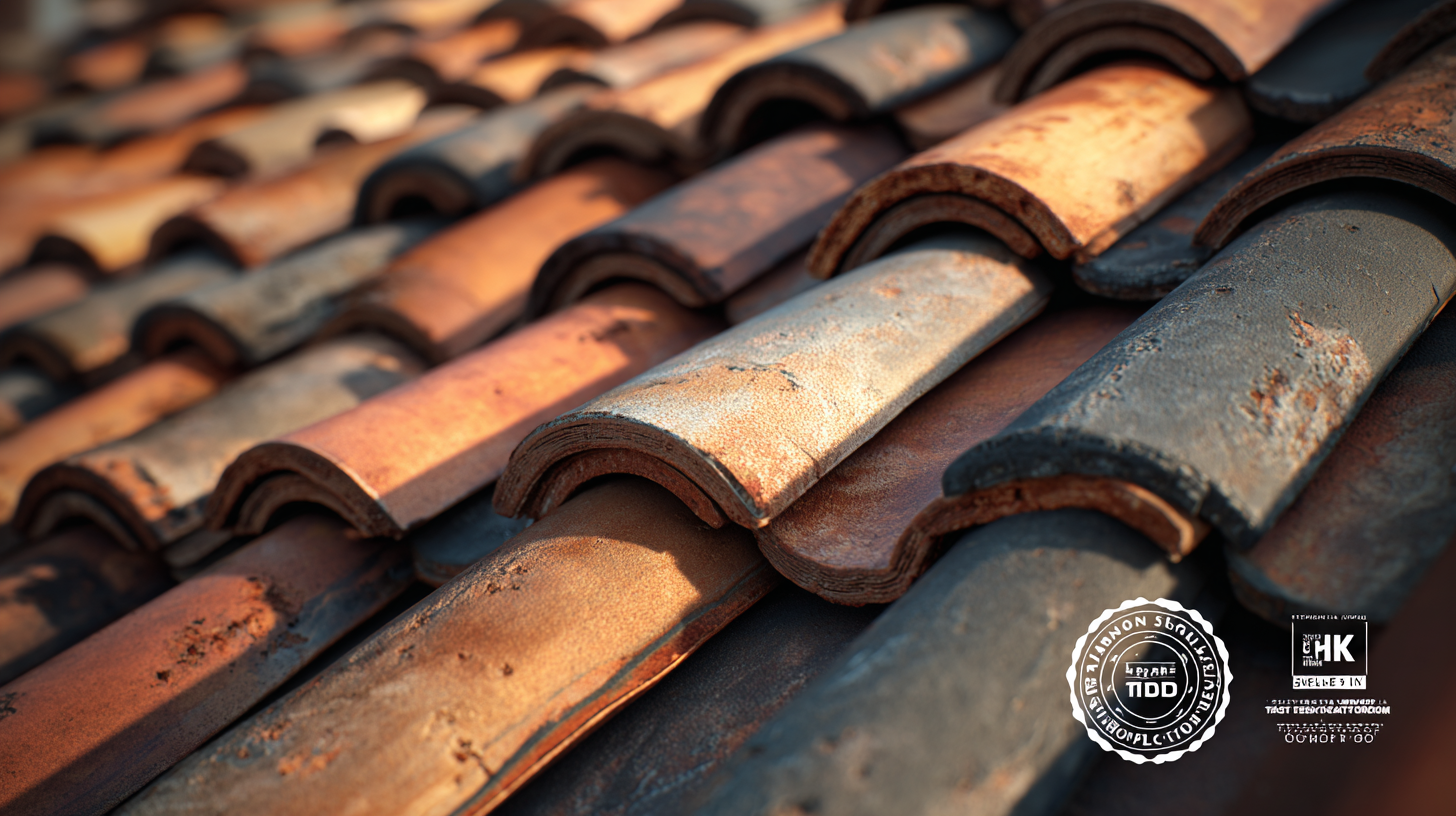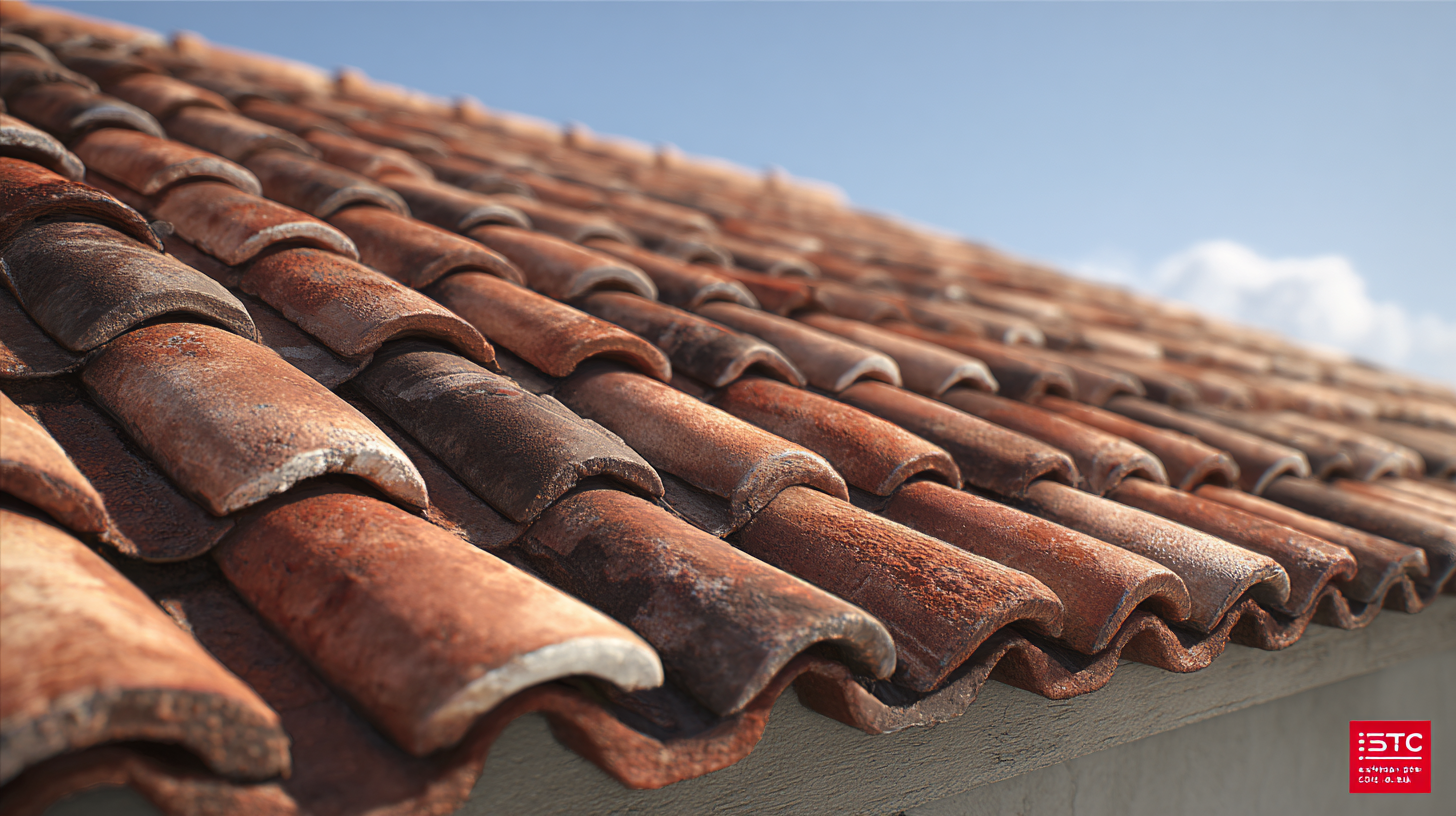
Leave Your Message
-
Phone
-
E-mail
-
Whatsapp

When it comes to home construction and renovation, selecting the right roofing materials is crucial, and roof tiles have emerged as a popular choice among homeowners and builders alike due to their durability and aesthetic appeal. According to a report by IBISWorld, the roofing tile industry in the U.S. is expected to exceed $4 billion in revenue by 2025, driven by a growing preference for high-quality, sustainable materials. However, with a plethora of options available, understanding the technical specifications of roof tiles—including material types, thermal efficiency, and lifespan—becomes essential. This blog will explore the problems associated with various roof tile types, offering insights to help homeowners make informed choices that align with their needs and preferences. By delving into industry standards and expert opinions, we aim to equip readers with the knowledge necessary to navigate the complex landscape of roofing materials effectively.

When choosing the best roof tile for your home, it's essential to understand the different materials available and their unique benefits. Common roof tile materials include clay, concrete, slate, and metal. Clay tiles are known for their durability and aesthetic appeal, providing excellent insulation while withstanding harsh weather conditions. Concrete tiles offer a budget-friendly alternative with similar benefits but are generally heavier and may require extra structural support. Slate tiles, while luxurious, come with a higher price tag and are often recommended for traditional homes due to their stunning appearance.
Tips: When selecting a roof tile material, consider the climate in your area. Clay tiles perform well in hot weather, while metal tiles are effective at reflecting heat and preventing ice dams in colder climates. Ensure that your chosen material aligns with the architectural style of your home to maintain curb appeal.
Additionally, keep maintenance in mind. Some materials, like slate and metal, require less upkeep compared to others that may need periodic sealing or replacement. Taking the time to research and weigh these factors can lead to a highly satisfying and lasting investment for your property.
| Material Type | Durability (Years) | Weight (lbs/sq ft) | Energy Efficiency Rating | Cost per Square Foot ($) |
|---|---|---|---|---|
| Clay | 50+ | 7 | A | $6 - $8 |
| Concrete | 30 - 50 | 9 | B | $4 - $7 |
| Slate | 75+ | 10 | A+ | $10 - $15 |
| Asphalt Shingles | 20 - 30 | 3 | C | $1 - $3 |
| Metal | 40 - 70 | 4 | B+ | $5 - $12 |
When selecting roof tiles, several key technical specifications should be considered to ensure durability and aesthetic appeal. The material of the roof tile plays a pivotal role; options like clay, concrete, and metal each have distinct properties. Clay tiles, while aesthetically pleasing and durable, come with a density of approximately 1,600 kg/m³, contributing to their strength but also weight. According to the National Roofing Contractors Association (NRCA), clay tiles can last upwards of 100 years, making them a worthwhile investment despite higher initial costs.
Another critical specification is the water absorption rate, which affects the tile's longevity and performance in wet conditions. For instance, high-quality clay tiles typically have an absorption rate of less than 10%, which enhances their resilience against freeze-thaw cycles. In contrast, concrete tiles generally exhibit higher absorption rates but can offer superior insulation properties. Lastly, the slope of the roof must be taken into account, as different tile types require specific angles to ensure proper drainage and prevent water pooling, a factor highlighted in various construction guidelines from the Roofing Industry Committee on Weather Issues (RICWI). Understanding these specifications ensures that homeowners choose the right roof tiles that align with their needs and local climate conditions.
When selecting roofing materials, understanding the durability and lifespan of popular roof tile types is crucial. Clay tiles, for instance, offer an impressive lifespan of over 100 years, largely due to their natural resistance to weathering and pests. They can withstand extreme temperatures and heavy rain, making them an ideal choice for diverse climates. However, installation can be labor-intensive, and their weight requires robust roof framing.
On the other hand, concrete tiles have gained popularity for their versatility and affordability. While their lifespan ranges from 50 to 70 years, they still surpass many other materials. Concrete tiles are less prone to damage from extreme weather and are available in various shapes and colors, allowing for customization without sacrificing strength. For those considering synthetic options, composite tiles are lightweight and can mimic the appearance of their natural counterparts, but they typically have a shorter lifespan of about 30 to 50 years. Each tile type presents unique advantages, making it essential for homeowners to weigh their options based on longevity, maintenance requirements, and aesthetic preferences when choosing the right roof tile.

When selecting roof tiles, energy efficiency plays a crucial role in determining the overall performance of your home. Roof tiles come in various materials, each offering unique thermal properties that can significantly impact energy consumption. For instance, clay tiles are known for their excellent thermal resistance, helping to keep homes cool in summer and warm in winter. In contrast, metal tiles reflect sunlight, which can reduce cooling costs in hot climates. Understanding these differences allows homeowners to make informed choices that enhance energy efficiency.
Tips: When selecting roof tiles, consider the climate of your region and opt for materials with high solar reflectance for warmer areas. Additionally, ensure proper installation and ventilation to maximize energy performance.
Another aspect to consider is the color of the roof tiles. Lighter-colored tiles can help deflect more sunlight, reducing heat absorption and lowering cooling energy usage substantially. Dark tiles might provide a cozy aesthetic but can lead to higher energy consumption in warm climates. Balancing aesthetics with functionality is key.
Tips: Always request samples to visualize how different colors will look on your roof and examine their impact on energy efficiency before making a decision.
When investing in roof tiles, understanding the balance between cost and value is crucial. Quality roof tiles not only affect the aesthetic appeal of your home but also significantly contribute to its long-term durability and energy efficiency. With recent technological advancements, such as those highlighted in the latest report by industry professionals, choosing roof tiles that combine high performance and cost-effectiveness has never been more accessible.
Here are some tips to consider when making your decision:
First, assess the long-term savings associated with energy-efficient roof tiles. Look for options that offer superior insulation properties or reflectivity, potentially lowering your energy bills. Secondly, consider the maintenance requirements of different materials. While clay or concrete tiles may have a higher upfront cost, their longevity and minimal maintenance can provide significant value over time. Lastly, don’t shy away from consulting professionals or reviewing certification reports to ensure that your investment aligns with the latest industry standards and innovations.
Making an informed decision can lead to a roof tile selection that enhances both your home's value and your peace of mind.
